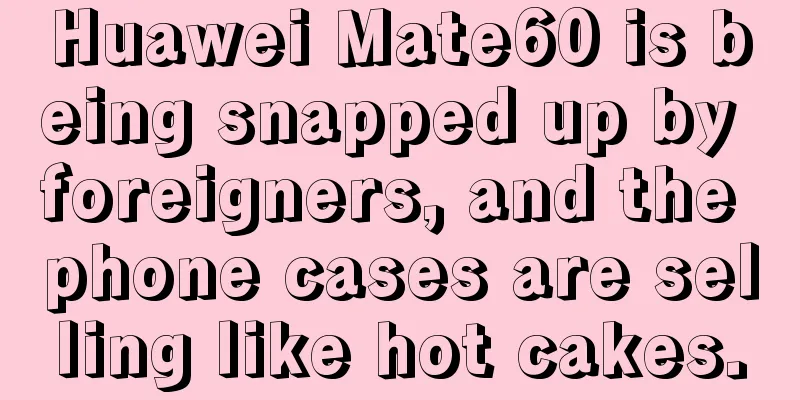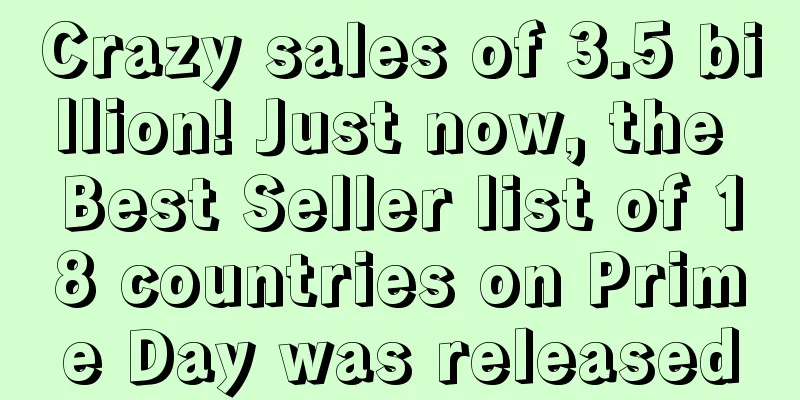Last August, Huawei CEO Ren Zhengfei mentioned in an internal article: "Huawei must make 'survival' its most important principle. Businesses that have expanded or invested blindly must be shrunk or closed, and the chill must be passed on to everyone."
Huawei's "chill" was caused by the sharp drop in mobile phone shipments under the US technology sanctions. Therefore, when this "chill" spread from the inside out, the mobile phone peripheral suppliers that were deeply tied to it were the first to be hurt by the bone-chilling cold - for example, Gemtek, a mobile phone case seller that was listed with the support of Huawei, was trapped in the "Huawei dependence" and slid into the abyss of declining performance. However, a year later, Huawei returned with the Mate 60 series of mobile phones. As the world's first smartphone that supports satellite calls, the spotlight of the global mobile phone industry instantly focused on the Huawei Mate 60 Pro. While observing this "Mate60 craze" calmly, one can't help but start thinking: Can Huawei, which has returned as the king this time, once again become the savior of the "JMETs"? Huawei returns and slaps the Americans in the face Without any preheating, Huawei's Mate 60 series of mobile phones were suddenly launched on August 29, instantly triggering a buying frenzy at home and abroad: long queues formed in offline stores across the country, and the official online flagship stores and major e-commerce platforms were quickly sold out.
▲ The picture comes from Huawei's official website
At that moment, the cumulative shipments of Huawei's Mate series mobile phones exceeded 100 million units, and it had been 1,566 days and nights since it was sanctioned by the United States. But this is not just a Chinese-only carnival. Although Huawei has clearly stated that the phone will not be sold in overseas markets, many overseas consumers are still keen to buy it through various overseas shopping channels. It is reported that netizens from all over the world are seeking relevant purchasing channels on major social media, which has also caused the product premium on purchasing websites in Europe, the United States and Japan to exceed 150%. ▲ The picture comes from Huawei's official website
The original domestic price of the Huawei Mate60 Pro 12G+512G version is about 7,000 yuan, which is about 140,000 yen after conversion. Currently, many Japanese dealers are competing to purchase from China, and the frenzy of buying has also caused the price to be repeatedly driven up. Among them, the 12GB+512GB version was sold for up to 200,000 yen, about 10,000 yuan; the 1TB version was sold for 270,000 yen, about 13,500 yuan. The hype in the United States is no less intense. According to industry sources, the Huawei Mate 60 series has been sold at a high price of $2,399 in the United States, or about RMB 17,500. Due to tight supply, prices are likely to soar further. Although Huawei phones are inherently handicapped overseas due to Google cutting off its GMS mobile services - unable to directly use mainstream software such as Youtube - the Mate 60 series is still sought after by consumers around the world. The reason is simple: it introduced the satellite calling function for the first time in the smartphone industry, which is something that the iPhone has not yet achieved. ▲ The picture comes from Huawei's official website
With this function, users can maintain communication in extreme environments such as those without ground network signals, and avoid losing contact with the outside world whether in a desert or uninhabited area. This is a very valuable survival tool for people who suddenly encounter danger in the wild. Compared with China, Europeans and Americans are more enthusiastic about all kinds of outdoor adventures and extreme challenges. It is common to encounter distress in deep mountains and forests, so the demand for communication in areas without signals is more extensive. For example, in a country like Japan where natural disasters are frequent, earthquakes, typhoons, volcanic eruptions, etc. may cause large-scale signal paralysis, and the satellite call function just fits this pain point. Therefore, it can be said that there is a lot of room for imagination for the Huawei Mate 60 series overseas. On the one hand, Huawei has already laid a solid brand foundation in overseas markets, which is a prerequisite; secondly, it relies on technological breakthroughs to meet the rigid needs of consumers; thirdly, the scarcity effect . Not only is it not currently sold overseas, but there are also no similar competitors in the market. The upcoming iPhone 15 is also mediocre in technological innovation, and the satellite calling function has not yet been developed. The launch of Huawei's Mate 60 series was like a thunderbolt that shook the entire smartphone industry. At this time, news began to spread in the industry that Huawei was planning to return to the global market, first in China and then overseas. Multiple technological breakthroughs in the past three years have laid the foundation for this return. At the same time, there are reports that Huawei China has achieved its annual profit target in the first half of the year. According to relevant institutions, Huawei Mate 60 Pro will exceed the already increased orders to 15 million to 17 million units, and may capture 70% of the high-end mobile phone market in the fourth quarter of this year. So, can Huawei, which is expected to return to its peak and make a comeback overseas, also rekindle the fire of hope for the mobile phone peripheral sellers who used to rely on it for their survival? Can the rise of the “big brother” save Gemtek, which has suffered losses for two consecutive years? For Gemtek, a big seller of mobile phone cases, its development story in the nearly three years since its listing can be perfectly summarized in one sentence: Huawei is both its success and its failure.
Mobile phone cases have always been jokingly called one of Amazon's three lucky treasures by cross-border merchants. The reason is that this type of product has a large demand but is highly homogenized, making it difficult to become a benchmark brand in the differentiated track. Therefore, if you want to survive in the fierce bloodbath, you will inevitably need to rely on a few "thighs". In 2006, Gemtek cut off a large number of product lines and transformed itself into a mobile phone case manufacturer. The following year, it ushered in a new era of smartphones - the iPhone was born. With its forward-looking development vision, Gemtek became an Apple mobile phone case supplier and took advantage of this favorable wind to rise rapidly. However, as the market became more competitive, Gemtek's competitiveness was gradually weakened. 2013-2015 was a dark period since its establishment, with both revenue and net profit falling year by year, once falling to the lowest point in nearly a decade. Fortunately, Gemtek met another great benefactor in its "shell life" - Huawei, and the gears of fate began to turn. At that time, Huawei was in high spirits, and its global market share of mobile phone business once surpassed Apple. In 2018, its mobile phone shipments exceeded 200 million, ranking among the top three smartphone manufacturers in the world. After boarding the ship of Huawei, Gemtek's performance regained vitality. From 2017 to 2019, Gemtek's sales to Huawei were 127 million yuan, 265 million yuan and 377 million yuan respectively, accounting for 23.47%, 40.99% and 45.47% of its revenue respectively. Thanks to Huawei's "nurturing", JMET's revenue and net profit have both bottomed out and rebounded in the past three years. Although its core business is mobile phone accessories OEM, JMET's profit margin in 2019 has exceeded 15%, even far better than many mobile phone manufacturers on the market. As a result, JMET soon ushered in its own listing highlight in 2020, becoming the "first stock of mobile phone cases." At that time, GMT stated in its prospectus that the surge in Huawei's mobile phone shipments has driven the continued growth of GMT's supporting mobile phone case business, and the technological upgrade based on Huawei's high-end mobile phone positioning has also increased the pricing level. It can be seen that in the process of GMT following Huawei's "drinking soup and eating meat", the invisible bond between the two parties is also deepening. Therefore, the situation changed suddenly in 2019. The claws of US sanctions penetrated the technological heart of Huawei and also stabbed Gemtek, which was dependent on Huawei. Huawei's mobile phone shipments plummeted since 2020, and under the chain effect, Gemtek's first financial report after listing was also unsatisfactory. "The competitive landscape of the mobile smart terminal product industry has changed, and the business of some of the company's important customers has been affected, resulting in a decline in the company's sales revenue this year and a decline in profits." Gemtek, whose performance has plummeted, also frankly acknowledged the setbacks brought about by its dependence on Huawei. In 2020, the company's performance began to decline, with profits plummeting by 75.16% in 2021 and suffering its first annual loss in 2022. In the days when Huawei fell from the altar, JMET was also dragged out of the throne of mobile phone cases by the thread of fate. Coincidentally, when Huawei's Mate 60 series was launched, JMET also released its first half report for 2023 at almost the same time. During the reporting period, Gemtek achieved revenue of 244 million yuan, down 32.22% from the same period last year; net profit attributable to shareholders of the listed company was a loss of 27.3407 million yuan, a year-on-year plunge of 66.89%. The data does not lie - Gemtek has not only failed to curb its performance decline, but also the profit gap will be difficult to fill in the short term. ▲ The picture comes from the Gemt Report The decline of Gemtek can be attributed to a certain extent to the market: Huawei, its former largest customer, has declined, and the global smartphone industry has also been sluggish during this period. Data shows that the global smartphone market shipments in 2022 were 1.207 billion units, down 9.9% from the previous year. According to IDC's forecast, shipments in 2023 may hit a ten-year low. But a big part of the reason lies in the backwardness of Gemtek’s own model. The business of Gemtek mainly covers two modules: ODM/OEM processing and private brands. As the core business, although the OEM business contributes to the vast majority of revenue, its gross profit margin has been at a low level for a long time, while the private brand business is as high as more than 60%. Therefore, if you want to break through the profit bottleneck, brand building is a must. Although the CEO of Gemtek expressed confidence in building its own brand last year, no significant results have been achieved based on the financial report for the first half of the year. In the first half of 2022, the proportion of GMT's ODM/OEM business in total revenue was 75.11%, while the proportion of its own-brand business was only 24.89%. The latest report shows that in the first half of 2023, this ratio has expanded to 8:2. Not only has the own-brand business not made any progress, but it has actually gone backwards, with revenue nearly halved in the same period. In fact, while vigorously developing its own brand business, Gemtek has also increased its efforts to cling to Apple. When the iPhone 14 was released, it specifically launched mobile phone cases made of military materials. However, due to the high price, it did not catch the eyes of consumers. Judging from the information disclosed in the financial report of Gemtek, "key customer drive" is still the core of its future strategy. Now that Huawei has returned with the Mate 60 series, as a key customer who has rewritten the fate of Gemtek, it is hard not to wonder whether it can bring it "soup" again. Recently, an investor asked whether Huawei's new high-end phones would be equipped with Gemtek products. Gemtek remained silent on the grounds that "the company signed a confidentiality agreement with an important customer." In fact, Gemtek has already missed an opportunity. In May last year, its competitor Shuyuan Technology launched a Huawei 5G mobile phone case and received good market feedback, and its stock price subsequently soared. However, Gemtek, once an important accessories supplier, did not win the Huawei 5G mobile phone case order. Will Gemtek miss the opportunity brought by Huawei Mate 60 Pro again? Only time can tell. It is worth mentioning that Apple held an iPhone 15 press conference early this morning. The launch date of the iPhone 15 is close to that of the Mate 60 series, which has once again made the competition between the two the focus. As smartphone giants compete to release new products, what new growth points will it bring to the mobile phone accessories sales industry? This is the most concerned aspect for cross-border investors. But the competition between giants also requires deep thought. At this stage, Huawei Mate 60 is not really "far ahead" of iPhone 15, and the technological gap cannot be bridged in the short term. But Huawei, which has worked hard for three years, has fought a beautiful turnaround with its outstanding innovation ability - if you can't be the best, then be unique. The same is true for cross-border expansion. In the current environment where homogeneous competition is becoming increasingly severe, if you cannot achieve a leading edge in R&D technology and product strength, you must find other innovative ways. This not only requires products and technology, but also includes aggressive content marketing strategies. Just as JMET certainly has excellent quality, it lacks the ability to innovate and keep pace with the times as hobby e-commerce is popular and the demand for mobile phone cases is becoming more diversified. As a result, after losing the protection of Huawei, it was overtaken by competitors due to weak competitive barriers and struggled on the edge of the brand.
|










